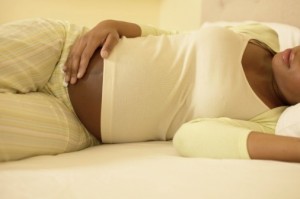Maternal Mortality and Abortion Advocacy
 Ever since reducing maternal mortality was established as one of the UN’s Millennium Development Goals (MDGs), abortion advocacy groups have been working hard to affix their own goals inextricably to the global effort to reduce the incidence of death of mothers in childbirth.
Ever since reducing maternal mortality was established as one of the UN’s Millennium Development Goals (MDGs), abortion advocacy groups have been working hard to affix their own goals inextricably to the global effort to reduce the incidence of death of mothers in childbirth.
As the MDGs near their expiration, some the most outspoken activists in favor of legalizing abortion worldwide have been raising notes of concern and frustration. At Slate, Amanda Marcotte, accused American NGOs of ignoring the topic of abortion entirely, partly due to laws limiting their ability to use government funding to promote abortion in foreign countries. She also cites Jill Filipovic, who wrote for Al Jazeera America that “maternal mortality is down, but the proportion of maternal death and injury caused by unsafe abortion has not changed.”
This echoes comments made earlier this year at a conference in the Philippines by former UNFPA head Dr. Nafis Sadik, who cited statistics saying that maternal mortality has decreased by 40 percent, yet “deaths due to unsafe abortion have not declined at all.”
As I wrote previously, it’s a bit misleading to say abortion-related deaths have not declined at all. When the pie gets smaller, and the pieces get smaller proportionally, that’s still a decline, just not a disproportionally large one. Of course, maternal health statistics are notoriously changeable. In 2010, the World Health Organization (WHO) was forced to revise their estimates after a rival source of global health estimates published far lower numbers. I recently wrote about how that 40 percent decrease in maternal health could owe more to a strategically pessimistic “before” picture than to successful interventions – other estimates put the decline closer to 22 percent.
But what has gone largely unchallenged is the claim that abortion accounts for approximately 13 percent of maternal deaths worldwide. Sadik and Filipovic have used this as an argument that more attention should be paid to “unsafe” abortion, by making it legal, for starters. But their basis for making that argument recently took a hit when the WHO published new estimates of maternal mortality by cause.
The new numbers come from a survey of multiple studies published between 2003 and 2012, analyzing the causes of maternal deaths between 2003 and 2009. Published in the Lancet, the WHO report attributes about 8 percent of maternal deaths to abortion – that’s roughly 40 percent lower than the 13 percent estimate they made in 2005, which by the way falls squarely within the survey period. In fact, if you compare the WHO’s 2003-2009 estimates to the 2005 estimates by cause category (hemorrhage, sepsis, etc.), no other individual cause shows as sharp a decrease as abortion.
In fact, the reported decline could be even higher if you take into account the methodology behind the sorting into categories. In 2005, the WHO had a separate category for “unsafe abortion,” which required that the fatal abortion be “performed by people lacking the necessary skills or in an environment lacking the minimal medical standards, or both.” In contrast, the “abortion” category in the 2003-2009 survey dropped the “unsafe” qualifier for induced abortion and also included deaths due to ectopic pregnancy and spontaneous abortion (miscarriage).
If the new WHO numbers are reliable, then not only have abortion-related deaths decreased proportionally with other causes of maternal mortality, they’ve actually outpaced other causes – the causes pertaining to childbirth itself. It’s also worth noting that the pro-abortion groups can’t easily claim credit for this – not after crafting so much rhetoric around the idea of having been left behind by the maternal health agenda.
Far too many women still die giving life, yet there are signs of hope: Latin America in particular has seen some significant reductions in maternal mortality in recent decades, largely due to long-term strategies that aren’t directly related to maternal health (and certainly aren’t due to legalizing abortion), like improvements in transportation, communication, and health care infrastructure. Sub-Saharan Africa, the region with the highest incidence of maternal mortality, will presumably follow a similar pattern, and hopefully sooner rather than later.
When that happens, it will be a victory for those who have worked tirelessly to ensure that every pregnancy and birth is survivable for both mother and child. But it could leave those whose attitude toward maternity is more of a zero-sum proposition in need of a new cause to co-opt – or force them to campaign on behalf of abortion for its own sake.
It’s quite telling that they’ve worked so hard to avoid doing so thus far.

